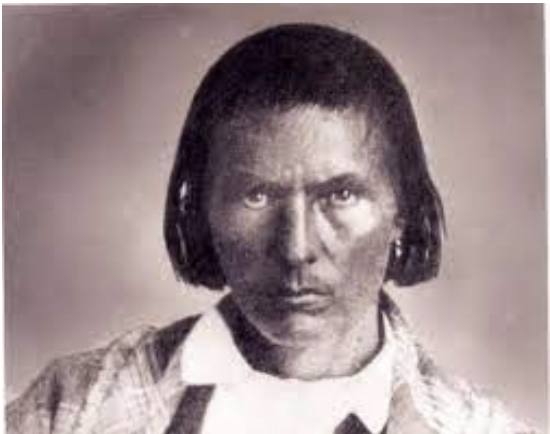Telling the History of Claremore…one story at a time
This story was first printed June 8, 1938 in the Claremore Progress and again on June 28, 1953 by W.T. Taylor. W. T. “Bill” Taylor was a pioneer of Cooweescoosee district and a resident in 1880.
The Katy railroad was built through Vinita in the 1870’s. Ten years later the Frisco railroad was built from Vinita to Tulsa built through Claremore’s present town site. In 1882 the railroad bridge was built across the Verdigris River near Catoosa. The Missouri-Pacific railroad was built from Ft. Smith up through Claremore to Coffeyville in 1889. It was chartered as the St. Louis, Iron Mountain and Southern, later being taken over by the MOP.
Uncle Joe Chambers was the first merchant to start in the town of Claremore. Other merchants followed. A. J. Lane and Emmett Starr were the first doctors. The town started to grow and later incorporated. A. L. Kates printed the first newspaper. Our first newspaper was published in the Cherokee as well as English language at Park Hill in the 1850’s and at Tahlequah in the 1860’s.
Back in the seventies and eighties the center of Cooweescoowee district was at Kephart’s Springs, six miles northeast of the present city of Claremore. In those days, the Cherokee Nation consisted of nine districts: Cooweescoowee, Delaware, Tahlequah, Going Snake, Flint, Sequoyah, Illinois, Saline and Canadian. Our district was as large as any three of the others. So all land from west of Grand River, south of the Kansas line, east of the Osage Nation and east and north of the Creek Nation had to come to Kephart’s Springs to court.
In those early days our court house was built of logs and a hickory tree stood close by; and when an Indian stole a horse or swore a lie, he was tied to the tree and given fifty lashes on the bare back.
John Bullett had a store near the Watt Starr place north and west of the present Claremore, and called it Claremore, which was named after an Osage Chieftain by that name. He later moved his store to where our city now is and gave it the name of Claremore. In 1885, a two-story frame building was built for the court house at Kephart’s Springs which was later moved to Claremore in 1889.
The only punishment for long term prisoners was cut wood for the seminaries and asylums and the city. Murderers were hanged. All law violators served their full terms. There were no paroles, no pardons. Daylight bank robbery or hijacking was unknown in early territory days.
In the 1870’s, the Cherokee Nation passed a law to adopt over 200 white men to full citizenship by marriage to a Cherokee Indian before 1874, with full rights to lands and monies, provided they paid so much to the treasurer of the Nation. Later that law was repealed and it then became necessary for a white person to secure twelve Cherokee signers to a petition before a marriage license could be secured, and then his marriage only carried a political right.
If an Indian worked for a white man, he had to pay 50 cents per month for a permit, and if cattle were shipped in from other states an Indian had to claim them and pay $1.00 per head.




